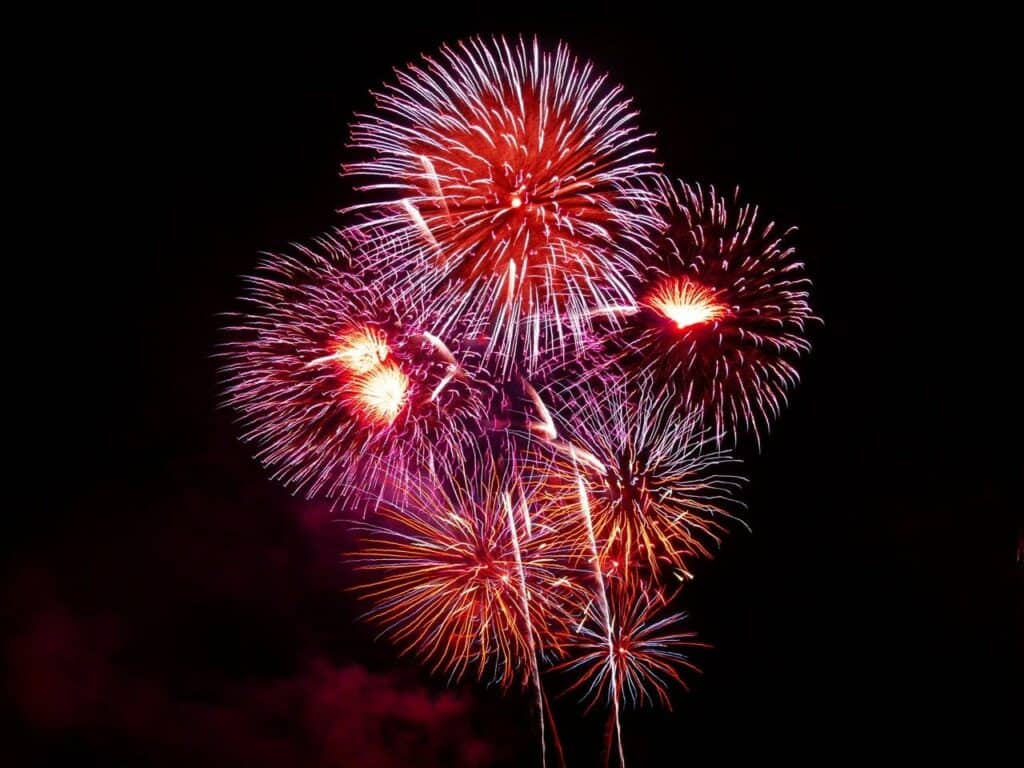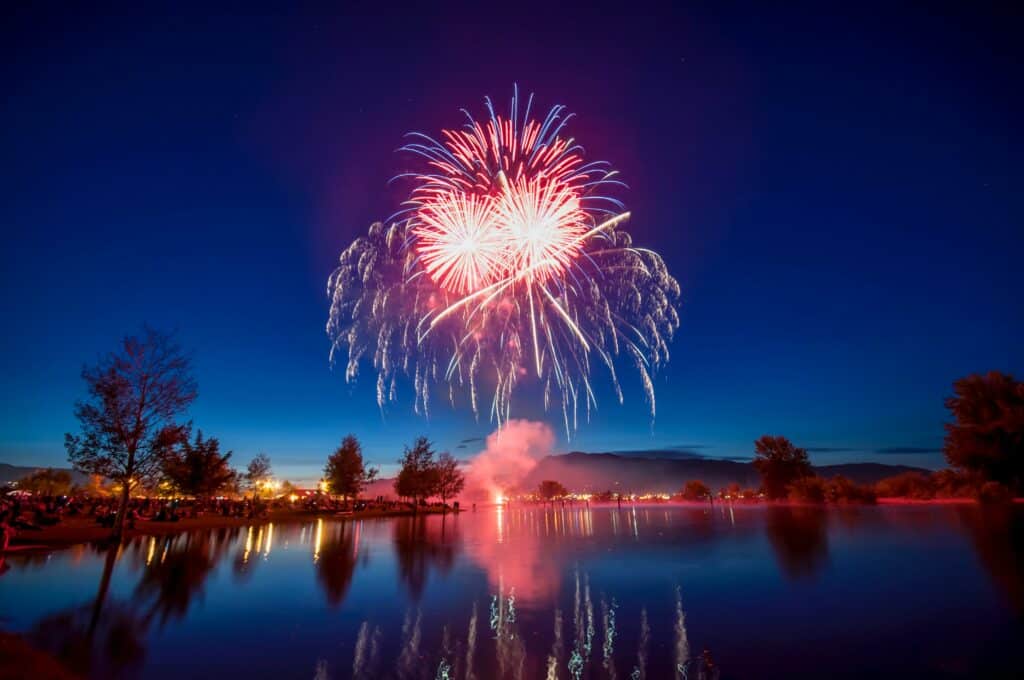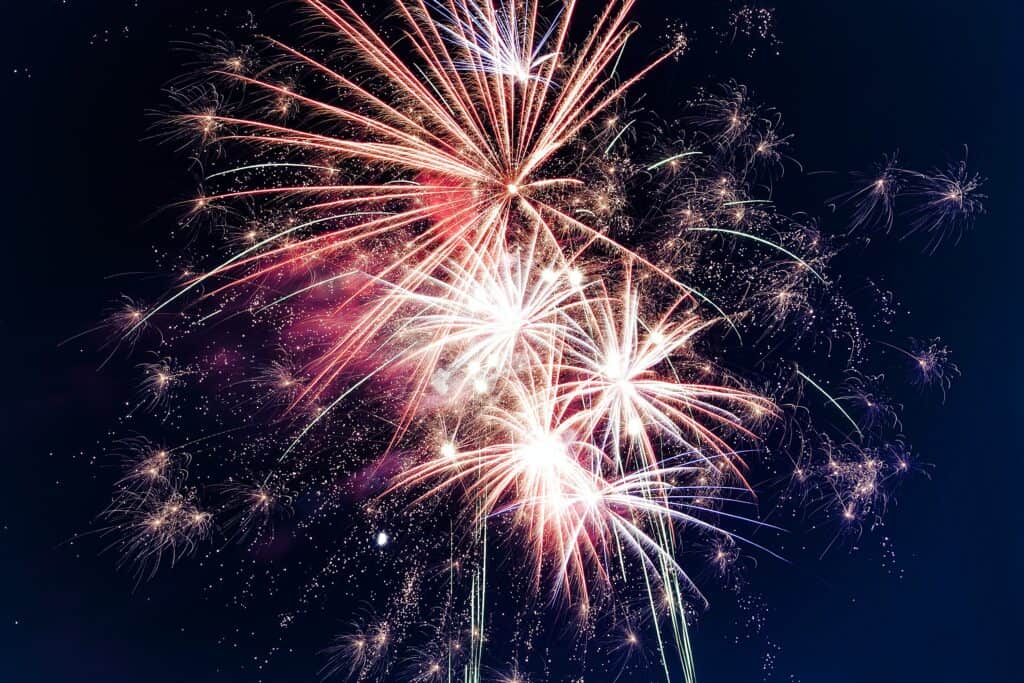Fireworks signify so many different things- from celebrations such as the 4th of July, to a beautiful show to light up the night sky. But to a photographer, fireworks provide an ample opportunity to capture some very unique, artistic, and abstract shots!
That being said, if you’ve ever tried to capture fireworks, you may have noticed that it’s not as easy as it seems. Here are our must-know tips for photographing fireworks!
Why Is It Hard to Photograph Fireworks?
To start, fireworks happen at (you guessed it) nighttime. That’s already a bit of a headache for your camera, which relies on light in order to take a picture. As much as you may think that fireworks are bright to the human eye, the camera doesn’t see them the same way. As such, most photographs of fireworks turn out very dark.
The secondary issue is achieving focus on a subject that is so far away! It’s similar to attempting focus on stars, you tend to have some complications with the camera unable to understand where your subject is. This is why many photographs of fireworks turn out so blurry and out of focus.
Fear not, there are solutions to these problems.
Tips for Photographing Fireworks
Here are 5 must-know tips for capturing great photographs of fireworks.
1. Adjust Your Camera Settings
Success all boils down to your camera settings. If you’re using a DSLR or Mirrorless system, these settings will be universal for you. If you’re trying on a point and shoot… good luck!
First thing is first, we want to set our exposure properly. Exposure is the amount of light that reaches your camera. Too much light and your image will be too bright, called overexposure. Too little, and it’ll be too dark, called underexposure. Exposure is a formula:
ISO + shutter speed + aperture = exposure.
Like a mathematical formula, if one variable is changed, the rest are affected by the change. Now, on to filling out this formula.
Because we are working at night, a slower shutter speed will be necessary. If you even wanted to use a fast shutter speed, fireworks just don’t look attractive that way because all you will capture is specks of light and dust. You want the motion blur to not only show a sense of movement, but to also take advantage of the beautiful shapes created when the firework explodes.
With the shutter speed set fairly low, you are able to keep your ISO low as well to prevent noise. Noise is like grain, you see specks in your image that shouldn’t be there. The higher the ISO number, the more noise your image will have. Keep this in mind when picking your ISO level.
Although you can remove noise in post processing, with fireworks, that can be tough. There is a limit to how much you can remove before your photograph begins to fall apart. You can tell your photograph is reducing quality when the image becomes murky, too smooth, or the detail is all gone. This happens quickly in firework photographs.
Now, the aperture, the final component of the exposure equation. As much as it may be tempting to use a wide aperture, this isn’t a good idea for fireworks. Focus can become difficult to achieve. The best suggestion is to use an aperture of F/8 in the minimum and F/16 in the maximum! Remember that narrower apertures darken images, so adjust your other settings accordingly.
2. Find a Great Vantage Point
Getting a good spot is key in firework photography. Before scouting out a vantage point, it’s a good idea to consider what kind of firework images you want to create.
Do you just want to capture photographs of the fireworks against a night sky?

Do you want some foreground and background elements, such as buildings and trees?

All of these factor into where you place yourself.
Equally, you need to find a location with flat enough ground to place a tripod (which we will discuss in the next tip). This may require exploring a location long before the firework show begins and staking out your spot very early before it gets crowded.
3. Tripods and Remotes / Shutter Releases Are Your Best Friends

Because you’re going to be working with slower shutter speeds and other unstable camera settings, having a stable force to keep the camera steady is key. Invest in a good tripod that is sturdy and durable! Make sure that when you set up your camera and tripod, that your camera’s brought up to eye level by the height of the tripod’s legs, not the height of the center column. For maximum camera stability, keep the center column as low as you can.
Next, a shutter release or remote will help you prevent unnecessary movement from clicking the shutter button to take a picture. Just press on the remote or release when you’re ready to capture an image.
Many new cameras such as Canon, Sony, and Nikon have corresponding cell phone applications that turn your smartphone into a remote and shutter release for your camera! This is a great solution that doesn’t cost any money.
4. Nail Good Focus
Focus is where things get a bit tricky. For some camera models, the autofocus is actually able to focus ‘to infinity’ and capture fireworks sharply regardless of their positioning. But for those systems that cannot, your best bet will be a combination of manual focus and a narrower aperture.
The narrow aperture ensures a deeper depth of field which means there is less room for focusing error. Then, manual focus allows you to set the focus yourself based on what would work best! Manual focus is when you lock on to a subject by hand. You find focus by turning the focus barrel ring until the subject is nice and clear in your viewfinder.
5. Anticipate the Best Framing and Composition
Although it can be a bit difficult to predict how high some fireworks will fly or how wide they will explode, try to do your best! Because your equipment will sit on a tripod, it’ll be less mobile than if you were going handheld- so figuring out your composition and framing is pretty important.
It’s always suggested to shoot a bit wider and crop in when editing the images, as that allows you less room for error if the firework explodes wider than expected.
Conclusion
In conclusion, once you readjust your camera settings, find a great location to shoot from, and implement some handy stabilization techniques- your photographs will be flawless!

